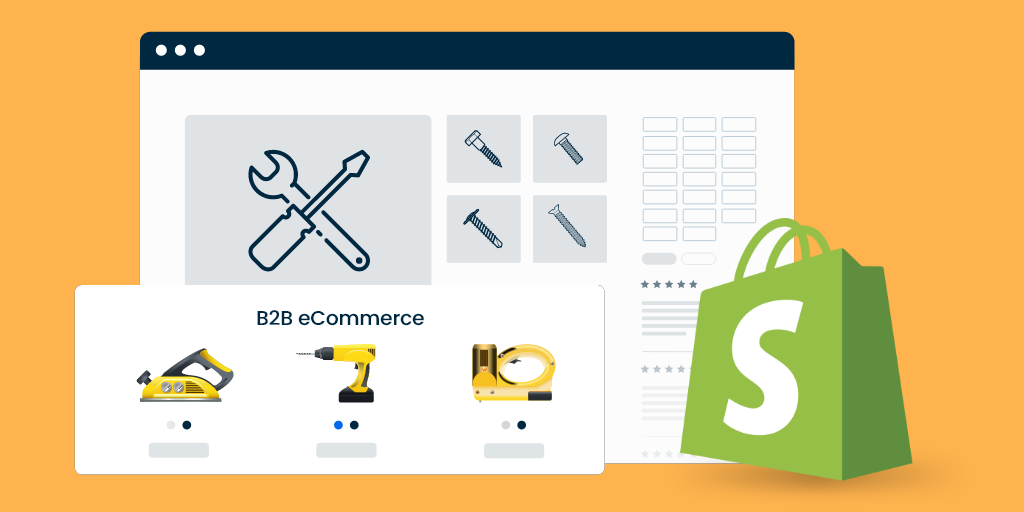Demystifying Third-Party Cookies and Zero Party Data for E-Commerce Marketers

We’ve all been creeped out by targeted advertisements at some point. Talk to a friend about something and the next thing you know, you’re being served an offer that’s exactly related to what you were talking about.
From the consumer’s perspective, that might feel creepy. But for a marketer responsible for driving sales and keeping advertising costs low, this targeting was haven.
Unfortunately, with third-party cookies being phased out and increased privacy regulations on devices like Apple, marketers are left confused on what the future looks like.
Fear not, marketer! You’re known for your agile ways and your ability to quickly change and adopt new technologies.
Zero-party data is here to save the day. And it’s high time marketers pivot to collecting zero party data so they can continue engaging their users with targeted and personalized offers.
But before we dive nose-first into this, let’s find out more about cookies, what they are, what they do, and how many types are there?
Table of Contents
- What Are Cookies?
- What Do Cookies Do?
- Cookies & Marketers
- Privacy Concerns & Decline of Cookies
- How Marketers Will Survive in a Third-Party Cookie-less World?
- What is Zero-Party Data?
- Techniques Marketers Should Use to Collect Zero-Party Data?
What Are Cookies?
Have you ever wondered how a website remembers your user IDs and passwords? This completely customized experience is because of cookies.
So, to put it simply, cookies are small text files that websites place on your browser when you visit them. Cookies help websites to identify and remember you, using your unique computer ID.
For example, let’s say you’re visiting a website for the first time. The website will place a cookie on your browser. So, the next time when you visit the same website, your browser will send the cookie back to the website.
This helps the website in remembering you and helps in tailoring your online experience accordingly.
But that’s not all. There are many different types of cookies. However, here are some types that are relevant to our topic.
Let’s find out more.
First-Party Cookies
First-party cookies, also known as “same-site cookies”, are the kind of cookies that go back and forth between your browser and the website you’re visiting.
This allows the website to store information about your preferences to deliver a wholesome and personalized online experience.
Third-Party Cookies
Third-party cookies work a bit differently from first-party cookies. These cookies do not travel between the website you are visiting and your browser.
Instead, they travel between the website, which has placed an ad on the website you are visiting and your browser.
This is why they’re named “third-party cookies” because the website that has placed an ad on the website you are visiting is a separate website.
Zombie Cookies
Zombie-Cookies are also third-party cookies. However, they are permanently installed on your devices even when you choose not to install them.
Moreover, it is difficult to get rid of them and they can often reappear after being removed.
What Do Cookies Do?
The basic functionality of cookies is to save and create a better flow of information between a website and your browser.
But what does a cookie do? What is its purpose?
Purpose of Cookies

Personalization
Cookies allow websites to show you ads based on the information delivered by your browsers. This targeted advertising is based on your interests.
Session Management
Cookies save information such as your user IDs, passwords, and other preferences, which offer you a much smoother and more personalized online experience.
Tracking
Cookies also track your online browsing activity. This allows websites to determine your interests based on your previous online activity.
Using this information, websites can suggest and show products or services that are according to your interest.
Cookies & Marketers
Ever heard the phrase “knowledge is power”? Of course, yes. Marketers have been thriving on knowledge for years.
The more you know about your customers’ target audience, the better chance you have, as a marketer, of reaching them.
Rise of Cookies
The concept of using cookies to know more about users is not new. For years, websites have been using cookies to collect data that can help them in delivering a better online user experience.
Brands have also been using cookies to collect data about their customers’ preferences.
Cookies have been a major source of information for marketers since the early 1990s. Marketers and advertisers have relied on third-party cookies to provide them with the much-needed information that will help them bring fruitful results.
How Marketers Use Cookies
Understanding your target audience is the basis of a successful marketing campaign. However, it is impossible to comprehend what your target audience is thinking without collecting data.
Both, first-party and third-party cookies, have played a significant role in collecting this information.
Using the information collected from cookies, marketers and advertisers understand the habits and pain points of their users.
This allows them to offer the right product to the right person. This substantially increases the chance of increasing sales and revenues for businesses.
Targeted Advertising
Let’s say you are someone good at sports. The browsing activity in your history will allow marketers to ascertain what may be the right products for you.
Based on your interests, advertisers and marketers will work on displaying ads of products that are a perfect fit for you.
Now, you’ll be seeing ads of running shoes or some other sports-related product. Being someone who has a keen interest in sports, you are more likely to buy these products.
Such advertising is known as targeted advertising. Showing selected ads to a chosen number of people, who are known to have prior interest in the said products or services.
Privacy Concerns & Decline of Cookies

Over the years, there has been an elevating concern for online privacy.
With cookies collecting your data, even if it is to offer you a personalized online experience, there is always the risk of your data being shared or getting into the wrong hands.
Yes, you do have an option to block/delete cookies to avoid this risk. However, this method isn’t foolproof.
Moreover, deleting cookies can be a hassle because they are simply going to reappear the next time you go online.
Blocking cookies may sound like the best option for maintaining personal privacy during your browsing sessions. But that may affect your overall online experience too.
So, what should you do?
Can Cookies be Dangerous?
Yes & no.
Understand, that cookies aren’t harmful.
They cannot infect your computers with viruses or malware.
However, they can become dangerous if you’re experiencing a cyberattack. Your cookies can be hijacked and your browsing history may be at risk.
That said, not all cookies pose this threat.
First-party cookies are generally safe because most people tend to visit websites they trust are reputable.
But when it comes to third-party cookies, they may pose a real danger.
You may visit a website with 5 ads. This means that an additional 5 cookies are being generated and saved on your device, even if you don’t click on these ads. These cookies can be used to track your browsing history.
So, you can’t trust the source of these third-party cookies, which brings the element of danger to them.
Is Google Against Third-Party Cookies & Why?
Slowly but surely, Google is working on eliminating third-party cookies.
Google announced to phase out third-party cookies in the next two years in early 2020.
Later, according to Google, “Chrome will phase out support for third-party cookies over a three-month period finishing in late 2023.”
As to why Google is bent on phasing out third-party cookies is a question. Research shows Google believes users are more concerned about their online privacy.
Justin Schuh – Director of Chrome Engineering said, “Users are demanding greater privacy – including transparency, choice, and control over how their data is used – and it is clear that the web ecosystem needs to evolve to meet these increasing demands.”
A Product Manager at Google, Chetna Bindra said “We continue to believe strongly that the decision to phase out support for third-party cookies is absolutely the right thing to do for user privacy and the industry as a whole”
So, in light of these statements, it is certain that Google supports the elevating privacy concerns of users. And, the company is also working towards phasing third-party cookies out.
How Marketers Will Survive in a Third-Party Cookie-less World?

Cookies have supported marketers and advertisers since the early 90s.
However, in the light of recent changes, it has become necessary for marketers and advertisers to look for alternatives.
Though they still have time to look for viable options, moving towards other ways for data collection seems inevitable.
Alternatives to Cookies
Here are some alternatives to third-party cookies that marketers & advertisers can use.
Contextual Targeting
You may have noticed seeing product/service ads on websites that are somewhat similar contextually. Though not new, companies are increasingly using contextual targeting because of the upcoming death of third-party cookies.
Device Fingerprinting
Gathering data about a remote browser or device is called device fingerprinting.
FLoC (Federated Learning of Cohorts)
Sounds like “flock”, doesn’t it? It doesn’t only sound like it in fact, it’s quite similar in concept as well. Using FLoC, you can group users based on their interests.
ID Providers
This is when users willingly choose to provide their information to marketers in return for a certain service. They’re usually used in Cloud computing to store and manage the users’ identities.
What is Zero-Party Data?

Zero-party data refers to personal information about users that they voluntarily share with you. It’s like talking to some customer when she walks in a store. You chat with her and find out about her birthday, interests, day-to-day, whether she prefers coffee with cream or no cream, etc.
Acquiring zero-party data online is a challenge for eCommerce marketers, no doubt. But one that’s easy to solve with different website features that can automate the process and lure customers into submitting data about themselves.
3 Major Reasons for eCommerce Marketers to Start Collecting Zero Party Data Now
- Apple’s Privacy Policies
Apple introduced a new privacy policy that prevents apps from collecting data of Apple users by default. Users are given a prompt asking for consent to allow apps to track data.
Apple makes about 60% of mobile devices used today.
Only 20% users had allowed apps to track data by 2021.
- Google Phasing Out Third Party Cookies
Google released a statement declaring that Chrome browsers will no longer support third-party cookies by 2023.
Other browsers like Mozilla and Safari had already ramped up their anti-tracking features.
This means eCommerce stores that still rely on third-party cookies are just temporary businesses.
- Consumers Are More Concerned About their Privacy
In a 2020 survey, consumers were asked whether they found targeted ads creepy or cool.
About 2/3 found the ads that follow them across devices creepy. 54% of respondents in the US found them creepy.
7 Website Features for Collecting Zero Party Data
Here are some website features that can help you collect zero party data.
1. Product Recommendation Quizzes
Product recommendation quizzes are the backbone of zero-party data. These are interactive quizzes that welcome your customer when they land on your website and ask you a series of questions about your preferences and interests.
The AI technology behind these quizzes use the answers to those questions to curate the product catalog and give a personalized recommendation to your customer.
The data you collect in the process is a goldmine for marketing. You can use that data to create different audience segments and serve personalized experiences to them.
Example: Shopping quiz by NWF
National Wildlife Federation recently partnered with Codup to get help with their website. We implemented a product recommendation quiz on their Shopify store to help them improve their customer experience and collect valuable customer data.
Read Also: Product Recommendation Quiz – The Marketer’s Favorite Tool to Capture Data and Improve CX
2. Lead Magnets
The most straightforward way to collect zero party data, lead magnets work on the principle of reciprocity. You offer valuable content to your users in exchange for their personal information.
Lead magnets are commonly used by companies and are easy to implement. What you need to do is create really high quality, authoritative content – analytical market researches for example – and give that content away for free.
To collect data with that lead magnet, you need to set up a landing page with a form that asks for some basic information about the user. When the user submits the form, she can unlock the content, which is usually delivered in her inbox.
While easy to implement, the success of a lead magnet depends on how good your offer is. If you’re offering something the user can easily ignore, your lead magnet will probably fail as a data-bait.
3. Progressive Forms
Progressive Forms allow you to find more about your customers with each new interaction with them.
For example, the first time a customer submits a lead form to get access to an eBook, you only ask for basic information like email address and name.
The next time the customer requests access to some other content, you ask for information that wasn’t collected the first time.
This way, you can keep your lead forms short and sweet but also build your customer profiles over time as they interact with you.
Progressive forms are used in conjunction with lead magnets. Invest efforts into creating a series of top-notch content and then use those content offers as bait with your progressive forms to collect information about your users and complete their profiles.
4. Ask for Data during Onboarding
This technique is frequently used by SaaS companies. As soon as the user logs in, a series of short and easy to answer forms are displayed over the screen that asks for information about the customer. This data can be used to build your audiences and serve targeted advertisements.
Example: When a user logs into Jira, she is asked information about her company. This data is then used to enrich customer profiles.
5. Incentivize Customers to Complete Profiles
Another great technique to get customers to submit their data is to incentivize them. Ask them to complete their profiles in their account settings in exchange for rewards like loyalty points.
Example: H&M offers points to customers for completing their profiles. Users can collect these points and use them to purchase products.
6. Online Surveys and Polls
Online surveys have two-fold benefits. One, you can create high quality content with insights collected through those surveys. Two, those surveys help you collect valuable data about your persona.
Though it’s not easy to implement this technique, it gives huge returns when done right.
Example: Hootsuite surveyed 18,000 marketers worldwide – their main persona – about what they were up to in 2022. They had two goals – create a report on Social Trends in 2022 and collect valuable data about marketers including their intentions this year. The results were fantastic. They created a solid piece of content, which they now promote across the board and use it as a lead magnet to collect more data from their prospects.
7. Free Tools
Offering free tools on your site is a popular way to collect valuable customer data.
Figure out what would be the most relevant and effective tool for your business type.
For example, if you’re a health and wellness company, you could offer a free tool that calculates BMI and body type.
Your customers will readily use the free tool to get information they’re seeking while you can collect valuable data about them. To make it more effective, make sure to gate the final results generated from the free tool and send it to the user via email. This way, you’ll build a complete profile of the person. integrate everything to your CRM so all user data is pushed there and saved at one place.
Need help implementing any feature that helps you collect zero party data? Partner with Codup’s award-winning eCommerce development service.




